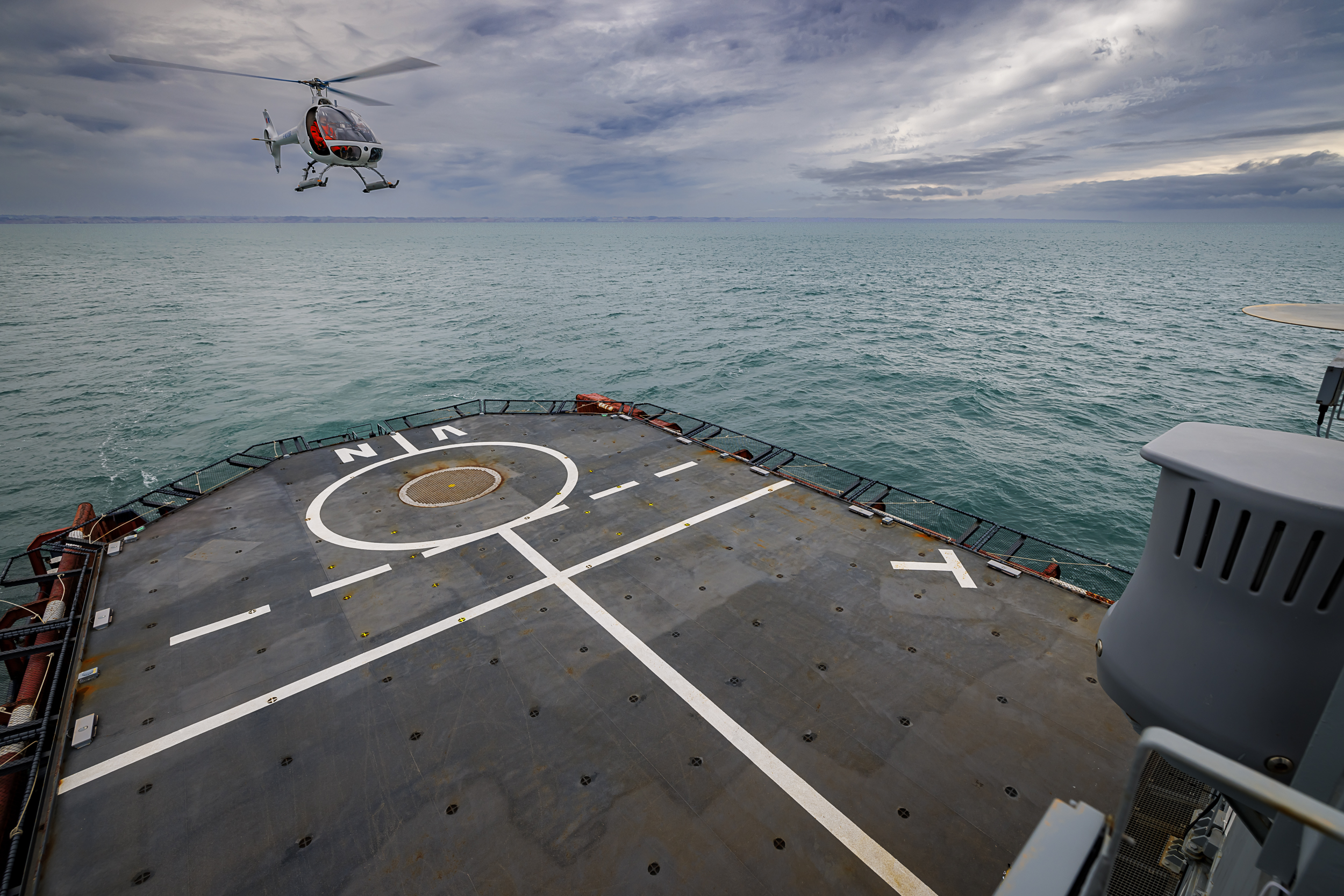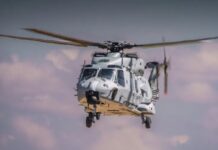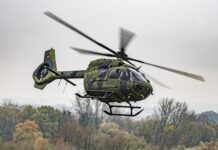In the scope of a flight test campaign, Airbus Helicopters has tested the Autonomous Take-off and Landing (ATOL) capabilities of the optionally controlled Vertivision Surveillance Rotorcraft (VSR) 700 aircraft on a civilian ship with a helicopter landing deck. The aim is to later demonstrate the VSR700 at sea on board a French Navy frigate.
The VSR700 is a development of the Guimbal CABRI G2 manned helicopter that has been equipped with an ATOL system. The VSR700 can be operated either manned or unmanned (Optionally Piloted Vehicle, OPV). With an empty weight of 510 kg, the aircraft can carry a payload of up to 490 kg. The payload includes – in addition to the naval sensors – the optional pilot. The 110 kW engine provides a top speed of 187 km/h and a maximum flight altitude of 6,100 m.
Details of the Autonomous Tests
The test campaign was conducted off the coast of Brest, France, in the presence of experts from the DGA. In addition to demonstrating the ATOL system developed for the VSR700, the tests also served to evaluate the approach procedures before landing on the vessel. The VSR700’s flight envelope at sea, close to a vessel, was tested in line with the development objectives and confirmed to be fully compatible with naval operations. Both the semi-autonomous and fully autonomous modes of the ATOL system were demonstrated in various sea conditions
The OPV initially performed pilot-assisted take-offs and landings before progressively moving to fully autonomous manoeuvres. The VSR700 uses Airbus DeckFinder to enable autonomous take-offs and landings on the ship’s deck in all weather conditions. This was done in both day and night conditions. In total, 150 autonomous take-offs and landings took place.
The first prototype of the VSR700 made its maiden flight in 2020. In April 2021, the DGA ordered a second VSR700 prototype to focus on testing the requirements for naval drone systems and to enable broader and faster development towards this goal.
GWH












